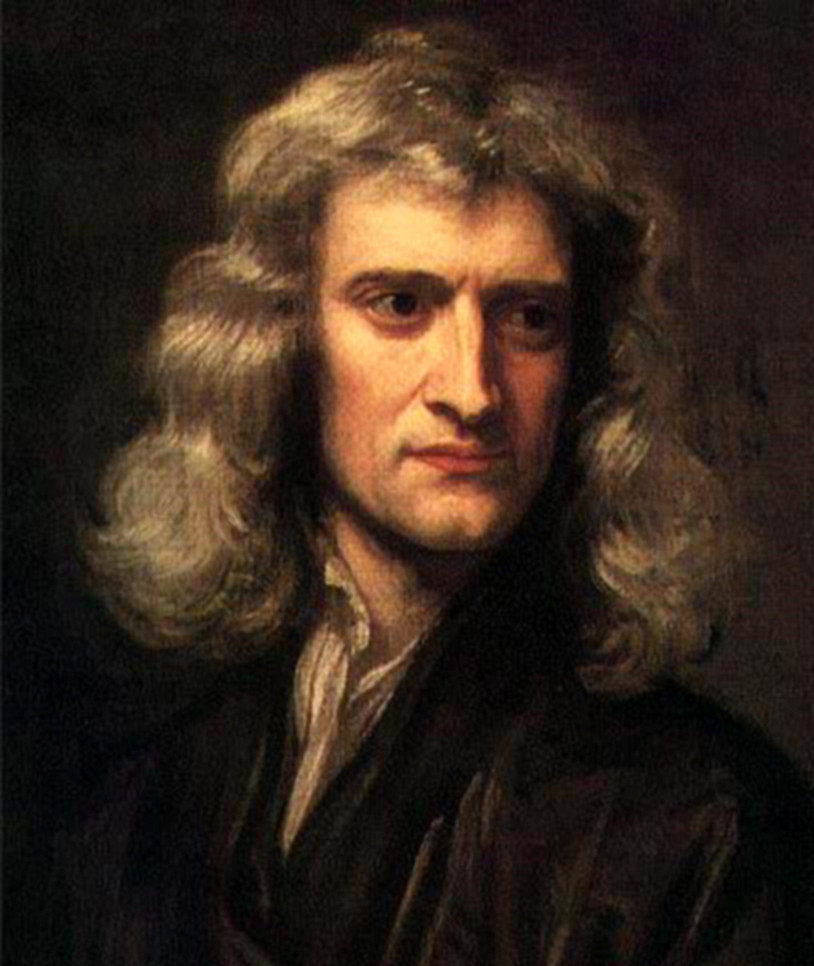
From the profound depths of the cosmos to the intricate workings of life itself, humanity’s relentless pursuit of knowledge has been a beacon, illuminating the unknown and propelling us into unforeseen futures. This grand expedition through discovery has been guided by extraordinary individuals—visionaries whose insatiable curiosity dared to question the established order and whose brilliant minds unveiled truths that reshaped our very perception of reality. They were not merely seekers of facts, but architects of understanding, constructing the foundational pillars upon which our modern world stands.
These exceptional individuals have left an indelible mark across a staggering array of fields, from the elegant complexities of physics and chemistry to the vast expanses of biology and astronomy. Their contributions are a vibrant testament to the transformative power inherent in human curiosity and the profound, enduring impact of those who possessed the courage to challenge the status quo. Join us now as we embark on an illuminating journey, delving into the remarkable lives and the immeasurable legacies of ten of history’s greatest scientists, whose brilliance continues to inspire and enlighten generations.

1. **Albert Einstein: Famous Scientist for the Theory of Relativity**
Albert Einstein, a name synonymous with genius, was far more than just a brilliant scientist; he was a figure of enduring fascination and widespread popularity, captivating the public imagination with his distinctive look and witty personality. His monumental contributions to science, particularly his famous equation E = mc² and the groundbreaking theory of relativity, did not merely expand knowledge but fundamentally challenged conventional notions, forever reshaping our understanding of the universe’s intricate workings.
Born in Ulm, Germany, in 1879, Einstein displayed a keen intellect from a young age, even writing a paper on magnetic fields during his teenage years, dispelling the popular myth that he struggled with mathematics. His professional trajectory began in 1905 as a clerk in the Swiss Patent Office, a period of remarkable productivity where he published his four groundbreaking papers. It was during this watershed year that he introduced the world to his famous equation, E = mc², elegantly describing the profound relationship between matter and energy.
Einstein’s revolutionary year of 1905 marked the publication of several of his most pivotal papers, delving into diverse topics such as Brownian motion, the photoelectric effect, and special relativity. His work on special relativity introduced the radical idea that space and time are not separate entities but are intricately interwoven into a single fabric, thereby laying an entirely new foundation for modern astronomy. Building on this, in 1916, he further expanded his theoretical framework with the development of general relativity, proposing that mass itself distorts the very fabric of space and time, a concept that would have far-reaching implications.
Despite his profound insights into relativity, Albert Einstein received the prestigious Nobel Prize in Physics in 1921, not for his work on general relativity, but specifically for his discovery of the photoelectric effect. Such was his fame that a film about his general theory of relativity in 1930 at the American Museum of Natural History led to what the Chicago Tribune famously dubbed “the first science riot in history,” with thousands of ticketless people trying to gain entry. He was indeed, as a publicist might say, “the whole package: distinctive look (untamed hair, rumpled sweater), witty personality (his quips, such as God not playing dice, would live on) and major scientific cred (his papers upended physics).”
Einstein, whose life concluded in 1955 due to heart failure, left behind a legacy that transcends mere scientific discovery. His profound influence extended to his role as a public intellectual, a passionate civil rights advocate, and a staunch pacifist. His theory of general relativity remains one of his most celebrated achievements, accurately predicting the existence of black holes and gravitational waves, which physicists have only recently measured from the collision of two black holes over a billion light-years away. Moreover, general relativity underpins the concept of gravitational lensing, a powerful tool enabling astronomers to observe distant cosmic objects with unprecedented detail.
Read more about: Visionary Minds: A Journey Through the Monumental Discoveries of History’s Greatest Scientists

2. **Marie Curie: Famous for Pioneering Work in Radioactivity**
Marie Curie’s extraordinary ascent to scientific prominence is a stirring narrative of unwavering determination, an insatiable thirst for knowledge, and profound resilience. Her early life, characterized by poverty and political turmoil in her native Poland, did little to dampen her ardent passion for learning. Instead, it fueled a resolve that would ultimately lead to revolutionary contributions in the fields of physics and chemistry, leaving an indelible and everlasting impact on the world of science.
Born Maria Salomea Sklodowska in Warsaw, Poland, in 1867, Marie faced formidable challenges throughout her early life. Both her gender and her family’s precarious financial situation posed significant obstacles, further compounded by the political oppression of Russian, Austrian, and Prussian rule over their homeland. Despite these hardships, her parents, who were educators themselves and fervent Polish patriots, instilled in her a deep and abiding love for learning and Polish culture, a foundation that would guide her future endeavors.
Denied conventional higher education opportunities due to societal restrictions and a lack of financial resources, Marie and her sister Bronislawa sought alternative avenues for intellectual growth. They joined the clandestine “Flying University,” an underground organization dedicated to providing Polish education, which was strictly forbidden under Russian rule. This early experience in defying norms and pursuing knowledge against all odds would become a defining characteristic of her remarkable scientific career.
Marie Curie’s transformative journey toward scientific greatness truly began when she arrived in Paris in 1891, driven by the singular purpose of pursuing higher education. Inspired by the pioneering work of French physicist Henri Becquerel, who had discovered the emissions of uranium, Marie chose to delve deeper into uranium’s mysterious rays for her Ph.D. thesis. Her meticulous and groundbreaking research ultimately led to the revolutionary discovery of radioactivity itself, a profound revelation that matter could undergo atomic-level transformations, fundamentally altering our understanding of the universe’s most basic constituents.
In a synergistic partnership, Marie Curie collaborated closely with her husband, Pierre Curie, their combined intellects leading to even greater discoveries. Together, they meticulously examined uranium-rich minerals, a painstaking process that culminated in the discovery of two entirely new elements: polonium, named in honor of Marie’s native Poland, and radium. Their monumental work was first published in 1898, and within an astonishing five months, they proudly announced the isolation and discovery of radium, marking a pivotal moment in scientific history.
This pioneering work in radioactivity earned Marie Curie, Pierre Curie, and Henri Becquerel the joint Nobel Prize in Physics in 1903, a truly historic achievement. With this, Marie became the first woman ever to receive a Nobel Prize, shattering barriers and setting a precedent for future generations of female scientists. Tragically, in 1906, Pierre Curie’s life was cut short in a carriage accident, a devastating blow to Marie. Yet, with indomitable spirit, she persevered, taking over Pierre’s position at the University of Paris and continuing her vital research. Her relentless pursuit of knowledge was further recognized in 1911 when she earned her second Nobel Prize, this time in Chemistry, for her remarkable contributions to the fields of polonium and radium, making her the only person to date to have received Nobel Prizes in two different scientific fields.
Marie Curie’s legacy extends far beyond her multiple Nobel Prizes; her contributions to the burgeoning fields of radiology and nuclear physics were equally profound. She established the renowned Radium Institute in Paris, which itself went on to produce its own Nobel laureates, a testament to her vision and leadership. During the harrowing years of World War I, she courageously led France’s first military radiology center, earning her the distinction of becoming the first female medical physicist, actively applying her scientific discoveries to save countless lives on the battlefield. Her own life, however, was tragically cut short in 1934 by a type of anemia, likely a direct consequence of her extreme and prolonged exposure to radiation throughout her groundbreaking career. In fact, her original notes and papers are still so radioactive that they must be preserved in lead-lined boxes, requiring protective gear for anyone wishing to view them, a stark reminder of the immense risks she undertook for science.
Read more about: Visionary Minds: A Journey Through the Monumental Discoveries of History’s Greatest Scientists

3. **Isaac Newton: Famous for Newton’s Laws of Motion and Gravitation**
Isaac Newton, an English mathematician, physicist, and astronomer, is widely celebrated as one of the most influential scientists in the annals of human history. His groundbreaking contributions spanned various fields of science and mathematics, cementing his status as a pivotal figure in the 17th-century scientific revolution. His work fundamentally altered the way we understand the natural world, laying the groundwork for much of modern physics.
Born on Christmas Day in 1642, Newton’s mere survival as a sickly infant was, in itself, an achievement. Despite his early frailty, his intellectual prowess blossomed, leading to an extraordinary period of discovery. Just 23 years later, with Cambridge University temporarily closed due to the pervasive threat of the plague, Newton retreated to the countryside and embarked on a period of intense, groundbreaking intellectual work. During this time, he not only formulated the fundamental principles that would bear his name but also invented calculus, a revolutionary new form of mathematics that would become an indispensable tool for scientific inquiry.
Newton’s inherently introverted nature, however, led him to meticulously withhold many of his profound findings from public scrutiny for decades. It was only through the persistent and impassioned efforts of his friend, the renowned astronomer Edmund Halley (famous for his comet), that Newton finally consented to publish his work. Halley’s initial interest was piqued by a scientific bet about planetary orbits, and he was utterly astounded when Newton, having already solved the complex problem, readily supplied the correct answer, revealing the depth of his independent work.
The culmination of Newton’s prodigious intellectual output was the publication of his monumental work, “Philosophiæ Naturalis Principia Mathematica,” universally known as the Principia, in 1687. This seminal text was not only a meticulous description of the motion of planets and projectiles but also a grand revelation of the unifying force of gravity, demonstrating with elegant precision that it governed both heavenly and earthly bodies. Newton’s laws, as articulated in the Principia, became the indispensable key to unlocking the universe’s most profound mysteries, providing a coherent framework for understanding celestial mechanics and terrestrial motion.
Newton’s dedication to academia and his intellectual pursuits was unwavering, bordering on the obsessive. He famously rarely left his room, except when compelled to deliver lectures, often finding himself addressing empty halls, a testament to his solitary focus. His contributions extended far beyond the celebrated laws of motion and gravitation, encompassing groundbreaking work in optics, pioneering color theory, and the development of reflecting telescopes that proudly bore his name. Furthermore, he made fundamental advancements in mathematics and expanded our understanding of heat, demonstrating the sheer breadth of his scientific genius.
In 1692, Newton experienced a rare personal and professional setback, enduring a prolonged nervous breakdown, possibly exacerbated by mercury poisoning from his intensive alchemical experiments. Although this period saw him cease producing new scientific work, his immense influence in the field persisted undiminished. In his later decades, Newton took on a new, unexpected role, dedicating his remaining three decades to modernizing England’s economy and pursuing criminals with unwavering resolve. In 1696, he received a prestigious royal appointment as the Warden of the Mint in London, a position many might have viewed as a comfortable sinecure. However, Newton, true to his meticulous nature, immersed himself completely in the role. He personally oversaw the complete recoinage of English currency, provided invaluable economic advice, established the gold standard, and introduced ridged coins to prevent the nefarious practice of tampering with precious metals. His dedication even extended to vigorously pursuing counterfeiters, fearlessly infiltrating London’s criminal networks, and personally witnessing their executions.
Newton’s formidable reputation among his contemporaries was, at times, shadowed by his rather unpleasant demeanor. He cultivated few close friends, never married, and was notoriously described by Astronomer Royal John Flamsteed as “insidious, ambitious, and excessively covetous of praise, and impatient of contradiction.” Newton was known for harboring grudges for extended periods and engaging in famous, often acrimonious, feuds, most notably with the German scientist Gottfried Leibniz over the invention of calculus and with the English scientist Robert Hooke. Despite these complex personality traits, Isaac Newton’s legacy endures as one of the world’s greatest scientists. His contributions to physics, mathematics, and various scientific disciplines profoundly shifted human understanding, and his laws of motion and gravitation continue to serve as foundational principles guiding physics. His work in optics and mathematics also laid essential groundwork for countless future scientific advancements, solidifying his unparalleled status as a scientific visionary. How fitting it is that the unit of force is named after stubborn, persistent, amazing Newton, himself a force of nature.
Read more about: Visionary Minds: A Journey Through the Monumental Discoveries of History’s Greatest Scientists

4. **Charles Darwin: Famous for Theory of Evolution Through Natural Selection**
Charles Darwin, a name that has become synonymous with revolutionary scientific thought, embarked on his transformative path inspired by a profound and innate curiosity about the natural world, particularly his early interests in beetles and geology. His eventual formulation of the theory of evolution through natural selection represented a seismic shift, boldly challenging prevailing beliefs and leaving an enduring legacy that continues to profoundly shape the field of biology and our most fundamental understanding of life on Earth.
Darwin, an initially unlikely revolutionary scientist, began his intellectual journey with seemingly unassuming interests. As a young man, he occasionally skipped classes at the prestigious University of Edinburgh Medical School, preferring instead to explore the vibrant countryside, collecting beetles and immersing himself in geological studies. It was this deep, personal engagement with the natural world that set the stage for his destiny. His path to becoming the revered father of evolutionary biology took an unexpected, pivotal turn in 1831 when he received a momentous invitation to join a world-spanning journey aboard the HMS Beagle, a voyage that would forever change his life and the course of science.
During his extraordinary five-year voyage aboard the HMS Beagle, Darwin meticulously observed and documented a vast array of geological formations, diverse habitats, and an astonishing variety of flora and fauna across the Southern Hemisphere. His careful, systematic observations led him to a paradigm-shifting realization, one that boldly challenged the deeply entrenched Victorian-era theories of animal origins, which were firmly rooted in creationism. He began to perceive patterns that hinted at a grander, more dynamic process shaping life.
Darwin keenly noticed subtle yet significant variations within the same species, adaptations that appeared to be directly influenced by their specific environments. This phenomenon was strikingly exemplified by the unique beak shapes of the Galapagos finches, each perfectly adapted to the particular food sources available on their respective islands. This profound observation gave rise to his revolutionary concept of natural selection, a groundbreaking idea suggesting that species could indeed change gradually over vast stretches of time due not to divine intervention, but to environmental pressures, with those best adapted surviving and reproducing.
Upon his return to England, Darwin, surprisingly, was initially hesitant to publish his radical evolutionary ideas, perhaps sensing the immense societal and religious controversy they would ignite. Instead, he channeled his energy into a meticulous study of the samples he had collected during his voyage, producing significant works on geology, coral reefs, and barnacles. In his personal life, he married his first cousin, Emma Wedgwood, and together they raised ten children. Darwin was notably a loving and attentive father, an uncommon practice among eminent scientists of his era, balancing his intense intellectual pursuits with his family responsibilities. Despite his unique interests in taxidermy, unusual foods, and his ongoing struggle with ill health, his dedication to his evolutionary pursuits never waned. Over two decades, he painstakingly gathered an overwhelming body of evidence, building an irrefutable case in support of evolution.
All of Darwin’s extensive observations, meticulous data, and profound musings eventually coalesced into the literary and scientific tour de force that was “On the Origin of Species,” published in 1859 when Darwin was 50 years old. The 500-page book sold out immediately upon release, signaling its profound impact, and Darwin would subsequently produce six more editions, each time further refining and adding to his compelling arguments. In non-technical, accessible language, the book laid out a remarkably simple yet powerful argument for how the immense array of Earth’s species came to be. It was predicated on two fundamental ideas: that species possess the capacity to change gradually over time, and that all species inherently face difficulties brought on by their surrounding environments. From these basic, observable facts, it logically followed that those species best adapted to their specific environments would survive and thrive, while those that fell short would ultimately perish.
Despite facing fierce criticism from staunch proponents of creationism and the entrenched religious establishment, Darwin’s meticulously documented theory of natural selection and evolution steadily gained acceptance, eventually becoming a cornerstone of scientific thought by the 1930s. His monumental work revolutionized the entire field of scientific inquiry and remains largely intact and critically relevant to this very day. The theory, characterized by its meticulous documentation and robust logical soundness, has withstood the rigorous tests of time and intense scrutiny. Jerry Coyne, a professor emeritus at the University of Chicago, emphatically emphasizes the profound and rapid impact of Darwin’s theory, stating that it “changed people’s views in so short a time” and that “there’s nothing you can really say to go after the important aspects of Darwin’s theory,” a powerful testament to its enduring scientific validity.
Read more about: Visionary Minds: A Journey Through the Monumental Discoveries of History’s Greatest Scientists

5. **Nikola Tesla: Famous for Electricity, Magnetism, and Wireless Power Transmission Concepts**
Nikola Tesla, a name synonymous with innovation in electrical engineering, exhibited a truly remarkable aptitude for science and invention from his earliest years. His pioneering work in the realms of electricity, magnetism, and audacious wireless power transmission concepts firmly established him as an eccentric yet undeniably brilliant pioneer in the nascent field of electrical engineering. A bronze statue on the Canadian side of Niagara Falls vividly captures his visionary spirit, depicting him gripping his hat, pointing his cane toward the iconic falls, and beckoning bystanders to envision the future. This statue stands atop an induction motor, a powerful symbol of the very engine type that drove the world’s first hydroelectric power plant, a testament to Tesla’s enduring influence on harnessing natural forces.
Born in 1856 in what is now Croatia, Nikola Tesla was a Serbian-American engineer whose groundbreaking work in electrical engineering laid the fundamental groundwork for our modern, electrified world. Tesla’s innovative designs and tireless efforts played an absolutely crucial role in advancing alternating current (AC) technology during the exhilarating early days of the electric age. His work was instrumental in enabling the efficient transmission of electric power over vast distances, ultimately achieving the monumental feat of lighting up countless American homes and industries.
One of Tesla’s most significant and lasting contributions was the development of the iconic Tesla coil, a high-voltage, high-frequency resonant transformer that had a profound and transformative impact on electrical engineering. Beyond this, his innovative techniques explored the very possibility of wireless transmission of power, a concept that, even today, continues to be a vibrant area of research and development, particularly in the rapidly advancing field of wireless charging for devices like cell phones. Tesla’s visionary mind, ever restless, led him to propose truly audacious ideas, including a grand, elaborate plan involving a system of towers designed to harness energy from the environment and transmit both signals and electricity wirelessly around the globe. While these ambitious ideas were undeniably intriguing and ahead of their time, they were ultimately deemed impractical and, regrettably, remained unrealized in his lifetime. Adding to his mystique, Tesla also famously claimed to have invented a “death ray,” a pronouncement that only further cemented his reputation as an eccentric genius.
Tesla’s eccentric genius and his prolific output of inventions earned him widespread recognition during his lifetime, an impressive feat for a scientist of his era. He held numerous patents that protected his groundbreaking ideas and made significant, foundational contributions to the field of electrical engineering. While he is often incorrectly credited with inventing alternating current (AC) itself, it is undeniable that he played an absolutely pivotal role in its practical development, widespread promotion, and ultimate implementation. His ceaseless work and a seemingly endless stream of inventions undeniably made him a household name, a rare distinction for scientific figures of his time.
In recent years, Tesla’s legacy has taken on a life of its own, burgeoning into a cultural phenomenon that, at times, even overshadows his actual scientific inventions. He has evolved into a powerful symbol of innovation, eccentricity, and forward-thinking, inspiring diverse events like San Diego Comic-Con, where attendees enthusiastically dress as Tesla, celebrating his unique persona. Perhaps most notably, the world’s most famous electric car company proudly bears his name, a clear reflection of his ongoing and profound influence on the electrification of transportation and the push towards a sustainable future. While Tesla’s mystique sometimes veered into the realm of self-promotion and fantastical claims, his genuine and fundamental contributions to electrical engineering are beyond dispute and cannot be denied. He may not have literally caused earthquakes with his inventions or single-handedly discovered AC, but his visionary work and monumental impact on the electrification of the world continue to brilliantly illuminate our lives, powering our homes and fueling our progress.” , “_words_section1”: “1948
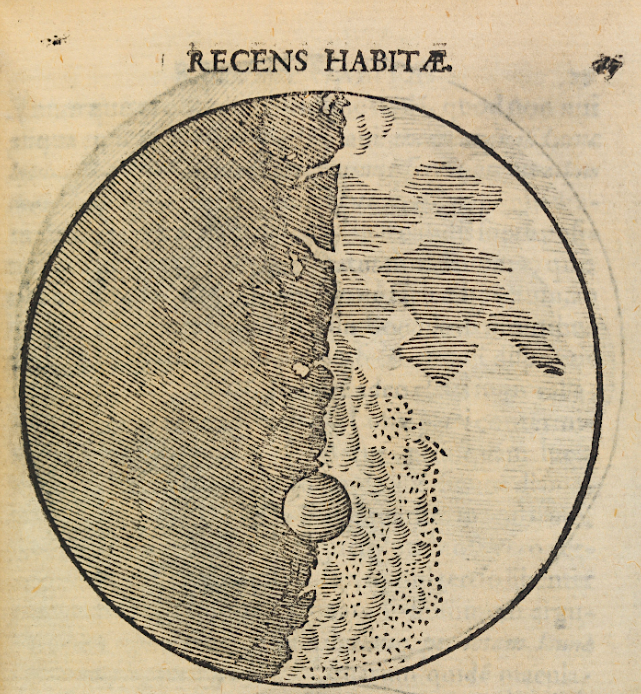
6. **Galileo Galilei: Famous for his Astronomical Observations and Our Understanding of Motion**
Galileo Galilei, an Italian mathematician, made a pivotal contribution to modern astronomy around December 1609. At the age of 45, he turned a telescope towards the moon, ushering in a new era in the field. His observations unveiled remarkable discoveries, such as the presence of four large moons orbiting Jupiter and the realization that the Milky Way’s faint glow emanated from countless distant stars.
Additionally, he identified sunspots on the surface of the sun and observed the phases of Venus, providing conclusive evidence that Venus orbited the sun within Earth’s own orbit. While Galileo didn’t invent the telescope and wasn’t the first to use one for celestial observations, his work undeniably marked a turning point in the history of science. His groundbreaking findings supported the heliocentric model proposed by Polish astronomer Nicolaus Copernicus, who had revolutionized astronomy with his sun-centered solar system model.
Beyond his astronomical observations, Galileo made significant contributions to the understanding of motion. He demonstrated that objects dropped simultaneously would hit the ground at the same time, irrespective of their size, illustrating that gravity isn’t dependent on an object’s mass. His law of inertia also played a critical role in explaining the Earth’s rotation.
Galileo’s discoveries, particularly his support for the Copernican model of the solar system, brought him into conflict with the Roman Catholic Church. In 1616, an inquisition ordered him to cease promoting heliocentrism, as it contradicted the church’s geocentric doctrine based on Aristotle’s outdated views of the cosmos. The situation worsened in 1633 when Galileo published a work comparing the Copernican and Ptolemaic systems, further discrediting the latter. Consequently, the church placed him under house arrest, where he remained until his death in 1642.
Galileo’s legacy endured despite the challenges he faced from religious authorities. His observations and pioneering work on celestial bodies and motion laid the foundation for modern astronomy and physics. His law of inertia, in particular, would influence future scientists, including Sir Isaac Newton, who built upon Galileo’s work to formulate a comprehensive set of laws of motion that continue to guide spacecraft navigation across the solar system today. Notably, NASA’s Galileo mission to Jupiter, launched centuries later, demonstrated the enduring relevance of Galileo’s contributions to the field of space exploration.
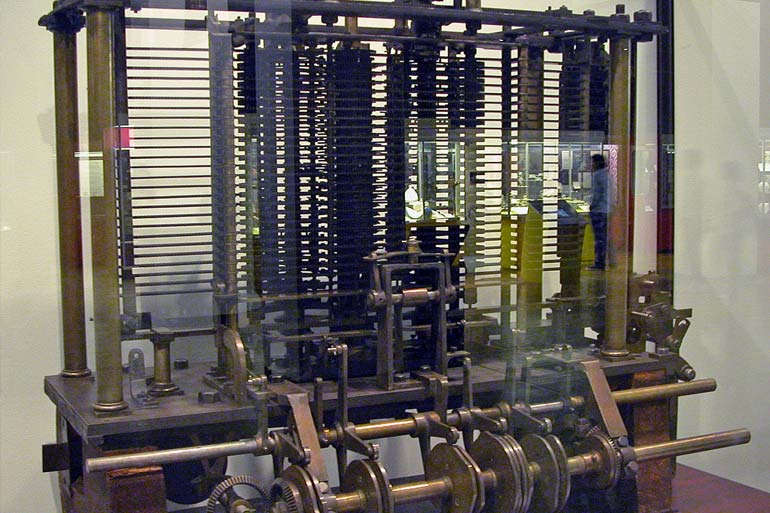
7. **Ada Lovelace: Famous For Being the World’s First Computer Programmer**
Ada Lovelace defied the conventions of her era and transformed the world of computer science. She is known as the world’s first computer programmer. Her legacy endures, inspiring generations of computer scientists and earning her the title of the “Enchantress of Numbers.”
Born Ada Byron, she made history as the world’s first computer programmer, a remarkable achievement considering she lived a century before the advent of modern computers. Her journey into the world of mathematics and computing began in the early 1830s when she was just 17 years old. Ada, the only legitimate child of the poet Lord Byron, pursued her intellectual passions with fervor.
This led to a pivotal collaboration with British mathematician, inventor, and engineer Charles Babbage. Babbage had conceived plans for an intricate machine called the Difference Engine — essentially a massive mechanical calculator. Their shared intellectual pursuits would spark a revolution in thinking about computation.
At a gathering in the 1830s, Babbage exhibited an incomplete prototype of his Difference Engine. Among the attendees was the young Ada Lovelace, who, despite her age, immediately grasped the workings of the machine. This encounter marked the beginning of a profound working relationship and close friendship between Lovelace and Babbage that endured until her untimely death in 1852 at the age of 36. Inspired by Babbage’s innovations, Lovelace recognized the immense potential of his latest concept, the Analytical Engine. This machine was more than a mere calculator; its intricate mechanisms, coupled with the ability for users to input commands through punch cards, endowed it with the capacity to perform a wide range of mathematical tasks.
Lovelace, in fact, went a step further by crafting instructions for solving a complex mathematical problem, effectively creating what many historians later deemed the world’s first computer program. In her groundbreaking work, Lovelace laid the foundation for computer programming, defining her legacy as one of the greatest scientists. Her contributions to the realm of “poetical science,” as she termed it, are celebrated as pioneering achievements in computer programming and mathematics. Despite her tumultuous personal life marked by gambling and scandal, her intellectual brilliance and foresight into the potential of computing machines set her apart. Charles Babbage himself described Lovelace as an “enchantress” who wielded a remarkable influence over the abstract realm of science, a force equivalent to the most brilliant male intellects of her time.

8. **Pythagoras: Famous for the Pythagorean Theorem**
Pythagoras left an enduring legacy in the world of mathematics that continues to influence the field to this day. While his famous Pythagorean theorem, which relates the sides of a right triangle, is well-known, his broader contributions to mathematics and his belief in the fundamental role of numbers in the universe shaped the foundations of geometry and mathematical thought for centuries to come.
Pythagoras, a Greek philosopher and mathematician, lived in the sixth century B.C. He is credited with the Pythagorean theorem, although the origins of this mathematical concept are debated and predate his formal articulation.
Despite potential earlier discoveries, Pythagoras is most famous for the Pythagorean theorem, which elegantly relates the lengths of the sides of a right triangle. While he may not have been the first to discover it, he played a significant role in its development and popularization. His emphasis on the importance of mathematical concepts, particularly in geometry, laid a crucial foundation for modern mathematical thought.
Pythagoras did not receive formal awards in the modern sense, but his profound legacy in mathematics and geometry is unequivocally considered one of the cornerstones of scientific knowledge and intellectual pursuit.
Pythagoras’ contributions to mathematics, particularly the eponymous Pythagorean theorem, have had a lasting and undeniable impact on science and education across the globe. His emphasis on the importance of discovering and understanding mathematical relationships and the certainty that mathematical proofs could provide continues to influence the very way we analyze and comprehend the world around us.
Read more about: Visionary Minds: A Journey Through the Monumental Discoveries of History’s Greatest Scientists
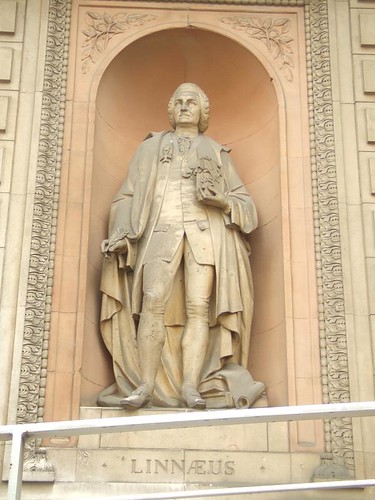
9. **Carl Linnaeus: Famous for His System of Naming Living Organisms**
Carl Linnaeus embarked on a profound mission to bring order to the chaos of naming living organisms. His innovative system of binomial nomenclature not only simplified the process of scientific communication but also laid the foundational groundwork for modern taxonomy, leaving an enduring and indispensable legacy in the field of biology.
Born in southern Sweden in 1707, Linnaeus was described as an “intensely practical” man by Sandra Knapp, a botanist and taxonomist at the Natural History Museum in London. He lived in an era where formal scientific training was scant, and there was no universal system for referring to living things. Plants and animals were known by common names, which varied widely by location and language, or by scientific “phrase names,” which were often cumbersome Latin descriptions spanning several paragraphs. It was into this chaos that Linnaeus introduced his functional, user-friendly innovation: the binomial nomenclature system, which would bring clarity and a common language to the scientific world.
While Linnaeus is often hailed as the father of taxonomy, his primary focus was on naming rather than organizing living organisms into evolutionary hierarchies; the task of ordering species into family trees would arrive later, notably with the work of Charles Darwin in the following century. However, the 18th century was also a time when European explorers were fanning out across the globe, discovering an ever-increasing number of plants and animals new to science, intensifying the need for a simpler, more systematic method of description.
Linnaeus, a botanist with an exceptional talent for noticing details, first used what he called “trivial names” in the margins of his 1753 book *Species Plantarum*. He intended the simple Latin two-word construction for each plant as a kind of shorthand, an easy and consistent way to remember and refer to it. As Knapp explains, it perfectly “reflected the adjective-noun structure in languages all over the world.” These trivial names, which today we know as genus and species, moved quickly from the margins of a single book to the center of botany, and then all of biology, marking an unintentional yet profound revolution.
Today, Linnaeus is often regarded as the father of taxonomy, though his primary interest was in naming things rather than establishing the evolutionary hierarchies that would be emphasized later by Charles Darwin. While advancements in evolutionary understanding and genetic analysis have supplanted many of Linnaeus’ other ideas, his naming system, remarkable for its simplicity and adaptability, continues to endure. As botanist Sandra Knapp aptly states, “It doesn’t matter to the tree in the forest if it has a name. But by giving it a name, we can discuss it. Linnaeus gave us a system so we could talk about the natural world.” His enduring legacy lies in providing a common, clear language for all biological sciences, a gift that continues to facilitate scientific understanding globally.
Read more about: Visionary Minds: A Journey Through the Monumental Discoveries of History’s Greatest Scientists
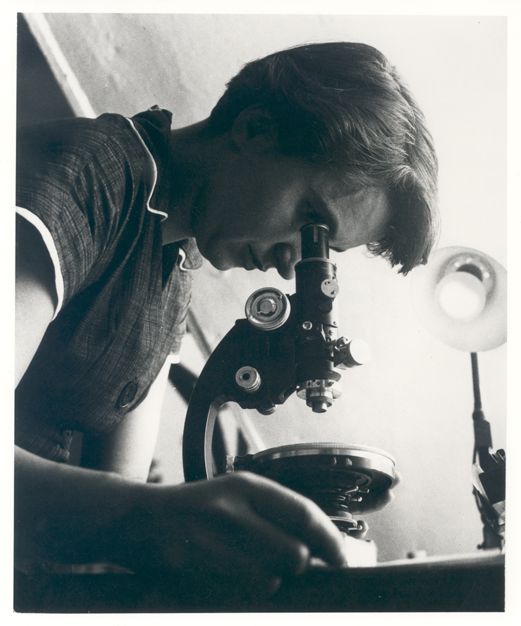
10. **Rosalind Franklin: Famous for X-ray Crystallography and Groundbreaking Research on Structure of DNA**
Rosalind Franklin, a brilliant and tenacious scientist, transformed the world of molecular biology with her unwavering dedication. Her pioneering work in X-ray crystallography and groundbreaking research on the structure of DNA propelled her to the forefront of scientific discovery. Yet, her remarkable contributions were often tragically overshadowed, and her legacy is not only one of scientific excellence but also a poignant testament to the persistence and resilience of a scientist who deserved far greater recognition in her time.
Rosalind Franklin, one of the greatest scientists of her time, was a British-born firebrand and perfectionist. While she cultivated a reputation for being somewhat reserved and difficult to connect with, those who knew her well found her to be outgoing and fiercely loyal. Franklin’s brilliance shone through in all her work, particularly in the intricate field of X-ray crystallography, an imaging technique that precisely reveals molecular structures based on scattered X-ray beams. Her early research on the microstructures of carbon and graphite remains influential in the scientific community to this day.
However, it was Rosalind Franklin’s groundbreaking work with DNA that would ultimately become her most significant contribution to science. During her time at King’s College London in the early 1950s, she meticulously worked to prove the double-helix theory of DNA. Her monumental achievement was epitomized in “photograph #51,” which was widely considered the finest image of a DNA molecule at that time, a crucial piece of evidence. Unfortunately, her vital work was viewed by others, notably James Watson and Francis Crick; Watson saw photograph #51 through her colleague Maurice Wilkins, and Crick received unpublished data from a report Franklin had submitted to the council.
In 1953, Watson and Crick published their iconic paper in “Nature,” which, while groundbreaking, only loosely cited Franklin’s work, which also appeared in the same issue. Rosalind Franklin’s pivotal role in elucidating the structure of DNA was tragically overlooked when the Nobel Prize was awarded in 1962 to James Watson, Francis Crick, and Maurice Wilkins. This omission is widely regarded as one of the major snubs of the 20th century in the field of science, a stark reminder of the challenges women in science often faced.
Despite her groundbreaking work and significant contributions to science, Franklin’s life was tragically cut short. In 1956, at the height of her career, she was diagnosed with ovarian cancer, an illness possibly linked to her extensive X-ray work. Remarkably, she continued her dedicated work in the lab until her passing in 1958 at the young age of 37. Rosalind Franklin’s legacy endures not only for her achievements but also for the recognition she deserved yet did not receive during her lifetime. Known for her “extreme clarity and perfection in everything she undertook,” as Bernal wrote, her contributions profoundly changed molecular biology. While her scientific accomplishments are celebrated, she is also remembered for how her pivotal work was overshadowed and underappreciated, a testament to her enduring, albeit complex, influence on the world of science.
From the cosmic ballet of planets to the infinitesimal structure of life itself, and from the bedrock of mathematical thought to the blueprints of future technology, these brilliant minds have collectively woven the rich tapestry of human knowledge. Their stories are a vivid testament to the power of relentless inquiry, the courage to challenge established norms, and the profound impact a single visionary can have on the entire course of human civilization. As we reflect on their monumental achievements, we are reminded that the quest for understanding is an unending voyage, continuously pushing the frontiers of what is known and inspiring new generations to look beyond the horizon. These scientists, in their diverse pursuits, have not just answered questions; they have taught us how to ask them, shaping not only our world but also our very capacity to comprehend it.



